Sustainability Agenda
Our Focus and Our Initiatives
The Journey Towards Decarbonization
The journey towards decarbonization As a user of fossil fuels, and a leading player in their global carriage, Hafnia has a pivotal part to play in the decarbonization of the shipping industry. Sustainability is not about making sacrifices in the face of challenges and regulations – rather, it is about making economic sense and capturing business opportunities. We continue to work hard to comply with all relevant global regulations governing emissions1 and safe carriage of hydrocarbons. Compliance makes business and financial sense because it impacts our license to operate; but more importantly, it is also the right thing to do.
Because it is the right thing to do, we take our efforts at minimizing environmental impact in general, and decarbonization in particular, seriously – implementing measures, in a structured way and tracking them using five-year environmental management plans. Measures include investments in modern tonnage with lower fuel consumption and in new technology which will allow us remote access to real time voyage statistics, as well as the ability to harness insights from data collected over many years of fleet management.
We also continue to scrutinize the granular – making physical changes to propellers, adopting new paint technology, tweaking engine tuning, utilizing autopilot, vessel trim and weather routing to make our ships run more efficiently and make every drop of fuel count. The next two tables summarise our efforts in the last five years on the operations front at reducing our environmental impact, and our environmental performance data in 20192.
These measures help move Hafnia in the right direction towards decarbonization of our business activities. It also leads us to conclude that sustainable development at Hafnia must include the decoupling of growth from emissions. How can we juggle a seemingly impossible goal – that as our fleet grows and ages, emissions cannot correspondingly follow but must instead decline?
1 Which places a 0.5% global sulphur cap on marine fuels.
2 We begin with 2019 as it is the year we merged our legacy companies.

| Unit | 2019 | |
| Vessel Emissions and Indicators | ||
|---|---|---|
| Number of vessels at the end of the year | No. | 89 |
| Oil use and generated CO2 emissions | ||
| Used HFO | metric ton | 383,202 |
| Used LSHFO | metric ton | 24,066 |
| Used MGO | metric ton | 81,128 |
| Generated CO2 emission from vessel | metric ton | 1,478,948 |
| NOX | metric ton | 79,586 |
| SOX | metric ton | 21,095 |
| Distance sailed in NM | NM | 4,594,384 |
| CO2 Emission in grams per ton-nm (Based on Capacity Work) | g/Ton-km | 5.82 |
Above: 2019 is the first year after the merger for Hafnia6
The following are mathematical assumptions used in our calculations: SOx: 2.7% Sulphur is considered for HSHFO, 0.5 % Sulphur for VLSFO & 0.1 % Sulphur for LSMGO. NOx: IMO Tier II, 14.4 gms / kWh is used. Computed Fuel energy is used for kWh calculations. Energy Calculation: Specific energy 40.4 MJ/Kg is used for HSHFO, 41.2 MJ/Kg is used for VLSFO and 42.2 MJ/Kg for LSMGO. CO2 Emission in grams per ton-nm (Based on Capacity Work) is calculated as Annual Efficiency Ratio (AER). It is a weighted average of all the Fleet Vessels.
6The following are mathematical assumptions used in our calculations: SOx: 2.7% Sulphur is considered for HSHFO, 0.5 % Sulphur for VLSFO & 0.1 % Sulphur for LSMGO.
NOx: IMO Tier II, 14.4 gms / kWh is used. Computed Fuel energy is used for kWh calculations.
Energy Calculation: Specific energy 40.4 MJ / Kg is used for HSHFO, 41.2 MJ/Kg is used for VLSFO and 42.2 MJ/Kg for LSMGO.
CO2 Emission in grams per ton-nm (Based on Capacity Work) is calcu-lated as Annual Efficiency Ratio (AER). It is a weighted average of all the Fleet Vessels.
![]()
Where Ci is the carbon emissions for voyage i com-puted using the fuel consumption and carbon factor of each type af fuel, dwt is the design deadweight of the vessel, and Di is the distance travelled on voyage i. The AER is computed for all voyages performed over a calender year.
The answer lies in a mix of human ingenuity and data analytics. In 2019, guided by data and augmented by deep maritime expertise, we undertook a study to understand our carbon footprint and produced a roadmap to take full control of efforts to ensure that as we continue to grow, with our right and planned initiatives, we will also comfortably meet IMO 2030’s target of reducing carbon intensity by 40% by 2030, compared to 2008 IMO baseline1.
In 2019, across Hafnia’s owned fleet, our carbon intensity was 5.82 grams/ton nautical mile (T NM), which is 23% below the present IMO 2008 baseline2. We have set a goal to reach IMO 2030’s target by 2028, by reducing our carbon intensity to 4.54 gms/T NM. To reach our goal, standard vessel optimisation efforts will be supplemented with additional initiatives such as intermittent drydockings and opportunistic fleet renewals3. The table below breaks down our carbon intensity figures by fleet type and provides details on what we plan to do in 2020 as part of our eight-year road map towards IMO 2030 compliance.
1 The target is to reduce carbon dioxide emissions per transport work, as an average across international shipping. Carbon intensity is calculated in the same way as Annual Efficient Ration (AER) which is CO2 (gms)/ Deadweight Ton Nautical Mile (T NM) MEPC 67/5/4.
2 This baseline may change.
3 Carbon intensity of new builds must decline to comply with mandatory IMO EEDI requirements. EEDI refers to the energy efficiency design index for new builds.
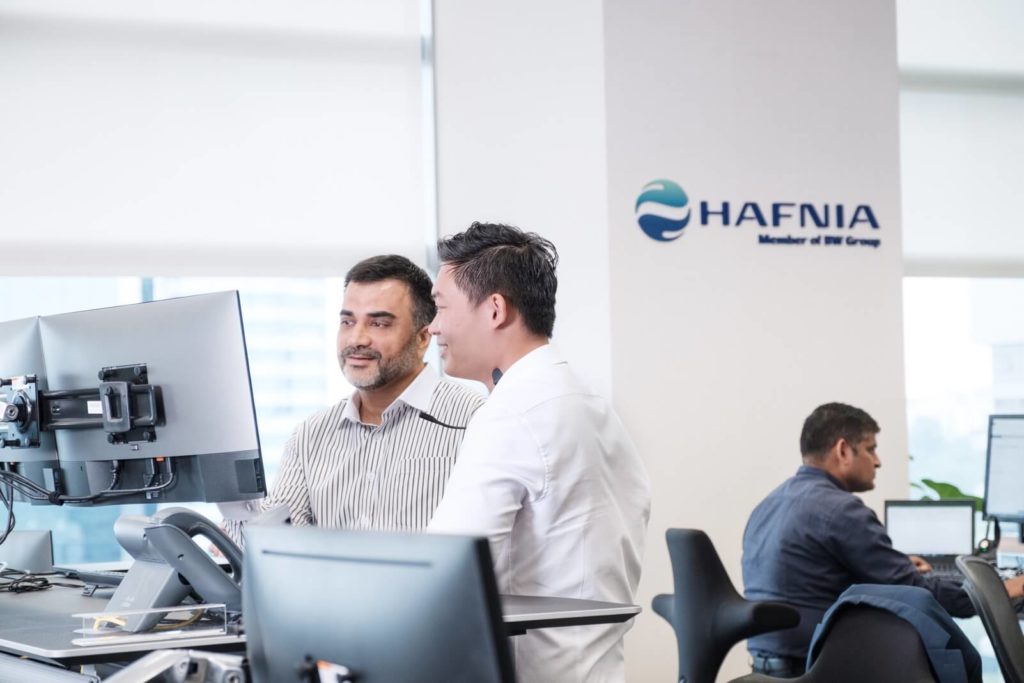
Above: Hafnia has invested in Alpha Ori, a company at the forefront of transforming ships into digital enterprises. Its platform, SmartShip, allows for real-time tracking of voyage performance and insights, and for early detection of possible equipment malfunctions and proactive maintenance efforts.Tabl
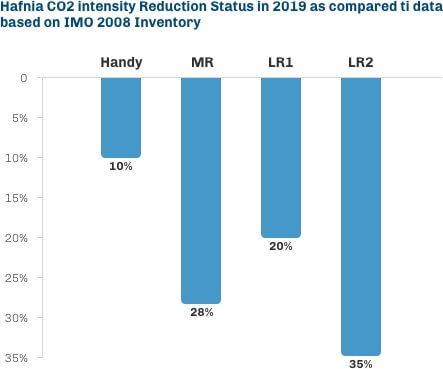
Above: Hafnia’s roadmap to IMO 2030 carbon intensity target
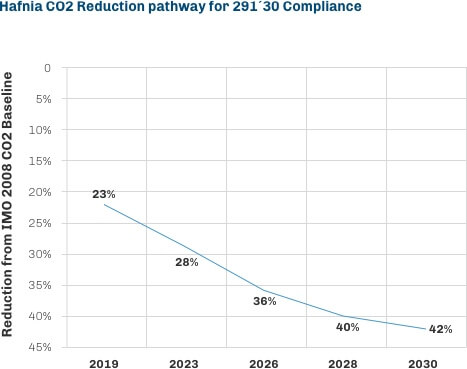
Above: Hafnia’s roadmap to IMO 2030 carbon intensity target
| Fleet Type | LR2 | LR1 | MR | Handy |
| Number in fleet | 6 | 311 | 41 | 13 |
| Average age (years) | 0.7 | 10.1 | 5.8 | 9.9 |
| 2019 Carbon intensity (gms/T NM) |
3.30 | 5.35 | 6.02 | 7.51 |
| 2019 Percentage below 2008 baselines | 35% | 20% | 28% | 10% |
| Carbon intensity – IMO 2030 target | 3.08 | 4.03 | 5.02 | 5.02 |
| Hafnia 2020 targets |
|
|
|
|
Above: Hafnia owned vessels and their carbon intensity
1 Including four LR1 vessels owned in the Vista joint venture and six bareboat-in vessels
The next section showcases the data-centric approach in optimising vessel performance, with a highlight on BW Kronborg, a 2007-built LR1 product tanker.
Safeguarding the Environment with Big Data
Managing one of the world’s largest fleets of product tankers means a diverse vessel profile – from technically-advanced newbuilds to older vessels in need of closer management for optimal performance. In 2015, Hafnia implemented a computerised performance system fleetwide to make sense of the enormous amount of data collected over the years. The system takes multiple factors into consideration when analysing performance, and among other functionalities, flags vessels which may be underperforming. It compares data reported by vessels against theoretical potentials and indicates any deviation in percentage terms. With regular input of operational data, the system provides insights into a myriad of operational trends and general machinery health of equipment (such as boilers, main engines and auxiliary engines), to pre-empt possible catastrophic failure of equipment out at sea. In addition to general optimisation, the system is also used to generate reports to ensure compliance with all regulations, and in the allocation of pool points. It also allows for weather routing, speed optimisation and for training of and communicating with onboard teams.
Hafnia usually dry docks vessels every five years with intermediate surveys taking place in between – a practice which allows us to provide well maintained vessels for our customers. Dry docking is a costly but essential part of fleet management. The process of dry docking involves taking a vessel off-service and sailed to a yard where it would be berthed and water drained so that submerged portions of the vessel, or areas which would otherwise be difficult to access at sea, can be maintained or replaced. Vessels are also given fresh coats of paint, including an anti-fouling layer, during dry dockings. Once the vessels are put back into service, they are more eco-friendly and fuel-efficient.
Since 2015, years of award-winning fleet management experience have been augmented by a computerised performance system, which goes a step further and allows for predictive analyses, where potential problems are flagged by the system and issues are managed before they become operational concerns.
The management of BW Kronborg is a good example of how we can complement deep operational experience with the smart use of data to reap both financial and environmental rewards. This initiative is estimated to reap approximately USD 3.4 million in fuel savings in two years due to reduced fuel consumption, and importantly, we would have reduced carbon dioxide emissions, in this two-year period, by approximately 12,000 tons per year.
Below: Emmissions reduction and increased savings for BW Kronborg

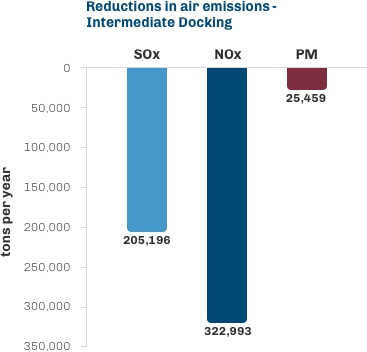
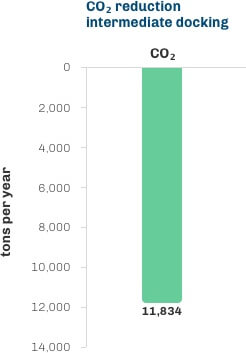
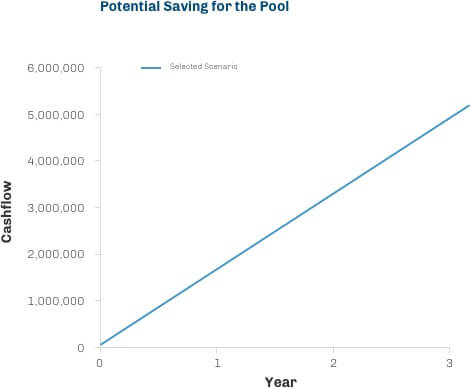
Workforce Diversity in Shipping
Hafnia is committed to cultivating and preserving a culture of diversity and inclusion. The collective sum of individual differences, life experiences, knowledge, unique capabilities and talent that our employees invest in their work represents a significant part of our company culture and reputation. Hafnia embraces differences in age, ethnicity, family or marital status, and all other characteristics that make our employees unique.
In 2019, Hafnia is proud to sign up to the Charter for More Women in Shipping, an initiative organised by Danish Shipping to encourage more women to join the shipping industry. A “Taskforce for More Women at Sea” has also put together ten recommendations that aim to help attract new women and to retain those who are already working in the industry. As a signee to the Charter, Hafnia will commit to establishing goals for the number of women in our employment and to drawing up concrete actions that they will undertake to reach these goals.
From time to time, the topic of gender representation comes up in maritime forums. Anecdotally, people mention the “sea of men” at shipping conferences, or that sailing crew are disproportionately male. Be it legacies of tradition, culture, politics or religion, many professions and industries are associated with specific genders. And rather than piecing together the history and politics shaping the gender bias in the maritime and shipping industries, Hafnia proudly shines the spotlight on some of the women leading at Hafnia – strong, capable individuals who are true ambassadors of Hafnia. A common theme emerges among these women, that character, tenacity and attitude should take centerstage. Key lessons will inspire all readers, both male and female.

Above: Mette Praest, General Manager, Handy & MR Operations represents Hafnia at the signing of the Charter. Pictured with her is Mogens Jensen, Danish minister for Food, Fisheries and Equal Opportunities.
10 recommendations from the women in shipping charter
1. Set specific targets
If you genuinely want to change the distribution of men and women in the industry, setting specific targets to achieve that is necessary.
A specific target as well as action plans that outline how to achieve it send a strong signal that you are serious about it. It is also key to bringing about a change in behaviour.
The taskforce for more women at sea recommends.
That shipping companies and educational institutions set specific targets for the number of women in their organisation and outline the specific initiatives required to achieve those targets.
2. Management should take the lead
Setting targets for more women in the staff pool requires some organisational changes, including behavioural or cultural changes. The idea is to create a common desired culture in the organisation that facilitates its goals, strategies and conduct.
The taskforce recommends that the initiatives and changes that are launched should be anchored in management. If the management team does not set the course and lead the way themselves, change rarely happens. All levels of management in the shipping company should get involved and be made responsible for the cultural change.
- That diversity-related workplace initiatives are anchored at the senior management level of the shipping company. It is also recommended to maintain close communication with the ship officers, which should function as a natural extension of the targets set by the company.
- To organise in-service training for the ship officers and senior officers on diversity and inclusion. In addition, the taskforce recommends setting targets for how many senior officers should complete the in-service training and that the ship officers should be assessed on the basis of employee satisfaction and retention rates, particularly in relation to female seafarers.
- That the same in-service training requirements and setting of targets apply to any ship and crew managers.
3. Support the women
It can be a major transition to join a ship’s crew, especially if it is the first time and you are the only woman among them. Therefore, it can be helpful to focus individually on the female crew member with support, mentoring and other measures that can ensure they have access to any help they require.
- That shipping companies and educational institutions actively support women who join ship’s crews. Prepare a good onboarding process, offer a mentor, review the shipping company’s staff policy, complaints procedure, etc.
- That shipping companies strive to add more women to a crew.
- That shipping companies ensure that everyone on board is aware of the company’s values relating to diversity and inclusion and is ready to support the female crew members.
- That the shipping companies strengthen the female employees’ attachment to the workplace during and after maternity leave.
4. Clean up language and eliminate prejudices
Language plays a role in defining which gender is being addressed. Therefore, it can be useful to more closely consider how a company communicates in order to switch out highly gender-based expressions with more gender-neutral ones so that no one feels excluded.
It should be stressed, however, that with this recommendation the taskforce is not suggesting that we abolish genders. In this context, gender neutralisation refers exclusively to equality, equal opportunities and reducing the number of obstacles based on gender.
- That shipping companies and educational institutions actively support women who join ship’s crews. Prepare a good onboarding process, offer a mentor, review the shipping company’s staff policy, complaints procedure, etc.
- That shipping companies strive to add more women to a crew.
- That shipping companies ensure that everyone on board is aware of the company’s values relating to diversity and inclusion and is ready to support the female crew members.
- That the shipping companies strengthen the female employees’ attachment to the workplace during and after maternity leave.
5. Raise awareness of career opportunities
In its dialogue with a number of female role models, the taskforce has found that knowing what career opportunities exist is crucial when women choose their educational track and job.
There are many opportunities to pursue a career in the Blue Denmark, but not all career paths are equally apparent. Similarly, there is also an inadequate level of awareness of opportunities that exist for in-service training.
- That maritime educational institutions and shipping companies raise awareness about the many career paths that exist within Blue Denmark.
- That the shipping companies facilitate an open dialogue on career change opportunities (e.g. from sea to shore or vice-versa) that facilitate a good work-life balance.
- That Danish Shipping should work on providing opportunities for retaining/recovering/maintaining certificates of competency after a period on land.
6. Rethink the recruitment process
The taskforce has worked with proposals on how shipping companies and maritime educational institutions can include the aspect of diversity in their recruitment and hiring processes, as these can often be marked by unconscious preferences and prejudices.
- Taking into account the diversity checklist below in the hiring process.
- Is the vacancy listing formulated in a way that appeals to both men and women?
- Is the interview panel/hiring committee composed of both men and women?
- Do the applicants who have been called in for an inter view include both men and women?
7. Make use of role models
Role models can play a major role in a person’s choice of educational programme and/or workplace, and more generally, how they learn and develop. The importance of role models is accordingly high in relation to ‘progressing’ in life and ensuring that there is someone we can see ourselves in and identify with.
- That World Careers continues and expands its use of female role models and ensures that there are role models of both genders present at events and all social platforms.
- That shipping companies make use of both male and female role models and encourage/support them in sharing their experiences and career tracks on relevant platforms.
- That male role models be actively used to articulate the need for and desire for more diversity at sea in a way that female candidates and staff feel welcome and valued.
8. Offer in-service training
If seafarers find their life situation or career goals changing, a transition from sea to shore – provided the attachment to the industry can be maintained – may be the solution. Currently, there is no general guidance on how to prepare for a shore based job in terms of competences, which can act as a deterrent for women in particular.
- That maritime educational institutions and other relevant parties create an overview of and draw attention to the in-service training and continuing education opportunities that already exist.
- That educational institutions develop relevant, modular in-service training courses that can bridge the gap between a career at sea and on shore in line with demand and provided that they are not already included in their course offerings.
- That shipping companies back the principle of life-long learning and support relevant in-service training/courses for seafarers who have expressed a desire or need to take a new direction in their career.
- That Danish Shipping continue its work on eliminating dead ends in the education system and facilitating as much flexibility and accessibility as possible in relation to maritime education.
9. Stand up to harassment and bullying
A crucial factor in retaining female personnel at sea is to ensure that the company and its staff have a clear set of values that include a zero-tolerance attitude towards harassment, etc., and that the company takes efforts to ensure a healthy and safe working environment seriously.
- That shipping companies have a clear policy (in writing) on harassment and bullying being unacceptable. The policy can be made more effective by including possible examples of conduct that is considered harassment and/or bullying, as well as the associated consequences of such conduct if the company learns that it has or is taking place. It should also clearly state where and to whom such conduct or incidents should be reported.
- That shipping companies ensure that all their employees are aware of the bullying policy, such as through employee meetings, officer seminars or other events where employees are brought together, making it clear to everyone that bullying is an important issue that the management takes seriously.
- That the issue of harassment and bullying is incorporated into the compulsory components of all maritime educational programmes.
10. Manage conflicts properly
While it is important to have an explicit policy stating that harassment and bullying are unacceptable, it is just as important to have a clear procedure in place in the event of conflicts occurring in the workplace. Unresolved conflicts can destroy the dynamic and flow of the workplace and end up costing countless hours of lost productivity from employees as a direct conse-quence thereof. In addition, unresolved conflicts can lead to good employees leaving the workplace and harming the reputation of the company.
- That shipping companies establish a clear complaints procedure that is accessible to all staff.
- That shipping companies ensure that complaints are dealt with quickly, uniformly and with dignity, and with clear communication throughout a complaint procedure.
- That shipping companies encourage their crews to draft and sign a joint statement that harassment and bullying are not tolerated on board their ships.

Above: Celebrating workforce diversity at Hafnia
Sustainability and Diversity – the Recipe for Success: Ouma Sananikone, Board Member
How do you think sustainable development looks for Hafnia and more broadly, for the shipping industry?
Ouma Sananikone (Ouma): A company’s commitment to sustainability underscores its responsibility to its stakeholders and is an important driver of its engagement with its clients, employees, the communities in which it operates, and how it conducts its business.
The right mindset and resources in addressing social and environmental issues grants a company or an industry continued permission to operate, helping to ensure its relevance, vitality and success, while building long term-value by being mindful of its impacts on people, society and the environment, and adopting the right strategy, fostering a positive culture, setting a clear framework today, in order to thrive tomorrow.
Handling 90 percent of world trade, the operations of the maritime industry have global economic and social impact. As such, the maritime industry is uniquely positioned with both the responsibility and opportunity to take a leadership position in its approach to ESG. The shipping industry can i) partner with stakeholders, including industry groups, to identify industry-wide solutions to manage environmental and social risks; ii) contribute to best practices; and iii) work with international and national bodies to frame regulations. Hafnia will i) set a robust ethical business framework; ii) adopt a clear strategy and ambitious goals, well defined metrics, beyond compliance; iii) continue to search for more efficient work practices, and better and innovative solutions in addressing the management of environment and social risks, workplace safety and wellbeing, sustainable operations, markets and products; iv) practice transparent reporting that includes measurement of progress against goals and industry/best practice benchmarks; and v) lead with best practices.
What are your thoughts on workforce diversity, and its importance to Hafnia and the shipping industry? How does diversity translate into a strategic advantage?
Ouma: Workforce diversity is essential to the success of any organisation, and particularly for Hafnia, a company that operates globally, to ensure its business remains competitive, innovative, sustainable, and meets the evolving needs of its clients and stakeholders. At Hafnia, we value the innovation and creativity that cognitive diversity brings and are committed to fostering such a culture. With keen competition for skilled workforces, people can choose where they work. Hafnia’s positive, diverse and inclusive culture, its alignment with the United Nations Universal Declaration of Human Rights, and Sustainable Development Goals, as well as its focus on and investment in staff’s safety, wellbeing and professional learning and development, makes it an employer of choice, and helps it retain and attract quality staff.
A vibrant, diverse and inclusive environment gives its people energy, and enthusiasm to achieve. It inspires them to create and find the best solutions for the company, its clients, and stakeholders. Hafnia’s workforce includes individuals from varied backgrounds with different skill sets, experiences and ways of thinking. That range of experiences, skills and perspectives are key strengths and critical to the range of services that Hafnia delivers across the globe, as well as understanding the communities in which it operates.
What would be your advice, for both men and women, who wish to aspire towards greater professional achievements?
Ouma: To succeed in whatever we do, we must have clarity of purpose and direction. We must recognise the difference between a wish and a goal – be clear about what you wish to achieve and set goals to get there. There must be 100 percent commitment, accountability and personal responsibility. Plan, prepare, set objectives and timelines, act, track progress, obtain and listen to feedback. Develop the skills, focus and determination required to achieve your goals, and ensure you create a positive personal impact and deliver outstanding performance.
Several personal attributes will also help you along your journey. First, communicate effectively – set the right tone, understand your audience, and articulate your message effectively so it is clearly understood. Learn to listen, influence and inspire. Second, build relationships with stakeholders – know them, their requirements and perspectives. Success is rarely achieved alone so be collaborative. Third, be passionate and curious – the world changes fast (think technology, geopolitics, information), so remain curious about your environment, and continue to learn and grow. Be an expert in a particular field, but also aspire to be a good generalist across many areas. Work fills a large and important part of our life, so work in companies with the right values and love what you do! Finally, show leadership and character – be courageous, optimistic, a good listener, empathetic, build a great team, care about your environment and community, and pursue initiatives that are impactful.
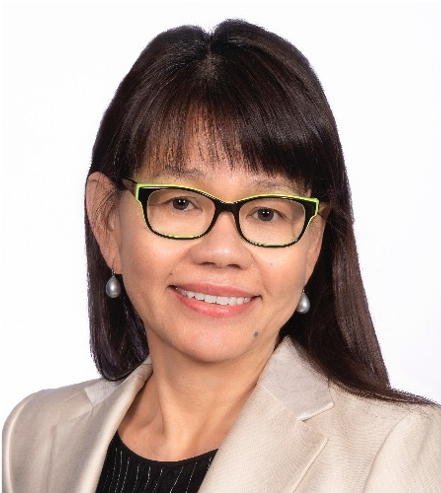
Finding Your Niche: Dorte Thuesen Christensen, Vice President, Operations and Claims
The shipping industry is still largely perceived as male-dominated. What attracted you to this industry?
Dorte Christensen (Dorte): I was primarily attracted to the prospect of an international career, where I would be trusted and empowered relatively early with significant responsibilities. I wanted a challenge, and I was looking forward to continuing my leadership journey from the Danish air force, but in a commercial setting.
What are your responsibilities at Hafnia, and what does a typical day look like?
Dorte: I am responsible for Commercial Operations and Claims, and we have five teams in three locations and our Claims Team in two locations. We run Operations via dedicated geographical teams, where we support our customers in their time zone. With local operations leads to support the teams on day-to-day matters, I have spent a lot of time in the first year focusing on integration after the merger – getting our procedures aligned, adjusting systems and reorganising all our legacy BW Tankers vessels into the pools. I also took time to look at our business more strategically; how do we get more competitive with 176 vessels, benefit from our scale and get best practices shared across our various locations and segments.
There is no typical day, however I do try to structure my day to manage different time zones. Seated in Copenhagen, I reach the office early to connect with Singapore. I try to invest a lot of time in talking to people, even if this is via Skype or Facetime as I believe that we get more out of a conversation where we can see each other, than one just over the phone. Currently, I am also overseeing the Houston team as the local operations manager is on maternity leave.
Why should diversity be an important corporate concern for an organisation?
Dorte: I believe you can only nurture a continuously high-performing team if you have diversity. Diversity comes in many forms – background, nationality, gender, age, experience etc. You need different people to create the best results, as they have different perspectives and ideas, and through shared conversations, we come up with better solutions for our customers.
Do you have any advice for women either thinking of embarking on a career in the industry or looking to advance into a management position?
Dorte: My advice applies to everyone. Do it. Do it for yourself, and not for the expectation of family or friends. Find your edge. Know yourself and your strengths and weaknesses. In my view, a fantastic career does not necessarily mean managerial responsibility. Anyone can be a star performer. If you do aspire to go into a managerial position, be a leader, even before you get the mandate; aim to be inspiring and motivate and support peers and younger colleagues. Share your experience and be curious about the perspectives of others.
When you get a managerial position, continue to be a leader and show the way; remove obstacles and give your team stretch targets. I get a kick out of seeing my team succeed, when they pull white rabbits out of a hat, deliver on a difficult task and support each other. All these make me proud and give me a sense of achievement.
I have five leaders reporting to me, two of them are also women who are also mothers to young children. They have found a way to be frontline female leaders in shipping. It can be done, and there is no secret recipe; it comes with prioritisation and accepting that you are not going to be there for everything.
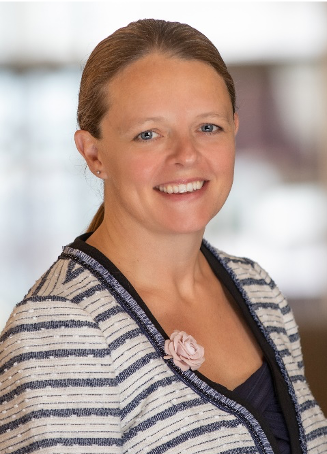
Breaking the Mold: Almitra Korgaonkar, Second Officer
Tell us a little about yourself.
Almitra Korgaonkar (Almitra): I completed my 12th grade examination in India in 2007 and signed up for pre-sea training. This was followed by cadetship and a concurrently completed bachelor’s degree in Nautical Sciences. I have been sitting for various examinations since then, such as Second Mate and First Mate certification. I am currently preparing for Master’s certification. I am the only daughter of my parents. My father is a project consultant and my mother is a freelancer in advertising and marketing. I was married in 2015, and my husband is a seafarer too. He sails in the BW LPG fleet as a Second Officer. To balance family life, we try to sync our contracts so we are at home at around the same time.
What led you to career at sea?
Almitra: I have always wanted to do something different and challenging. I had known about the merchant navy through a relative and the idea of working on a ship has always fascinated me.
What qualities does one need to be an Officer?
Almitra: On the educational and professional front, you will need to study science with physics, chemistry and mathematics; followed by a bachelor’s degree in nautical science. With that, you will join a shipping company as a cadet, and from there pass a series of competency exams to progress through the ranks. On the personal front, you must be able to live alone and away from family for long periods. You must be resilient and be able to perform under pressure. You must fully embrace life at sea and always be eager to learn and thrive even when facing changing weather conditions and time zones. Also, you should understand some elements of human psychology – as we are usually about 18 people on board, with everyone away from home, we can sometimes feel lonely. It is vital to treat everyone as your second family onboard, the vessel as your home away from home, support each other and perform as a team.
What were some of the challenges you faced in your career?
Almitra: Merchant shipping is an overwhelmingly male dominated industry, and not all shipping companies hire women. There was a time when I was at home for more than a year, waiting for the opportunity to sail at sea. During that period, I was stressed, but I used that time to update my knowledge and focus on other aspects of life. Fortunately, I was then employed by BW Tankers and now Hafnia and have looked forward ever since.
What has been your experience being a female crew member at sea?
Almitra: Being the only female onboard comes with its pros and cons. It also depends on the kind of team you have on board and the relationships you develop. You meet a variety of people at sea; some are encouraging and some less so. Dealing with prejudices and trying to be accepted by the rest of my crew used to be difficult during my earlier years. But with years under my belt, I’ve learnt how to manage difficult situations better, and convince my teammates that I am well suited for my job at sea and this means being extra cautious while doing my job, proving my competency and performing better than my peers.
